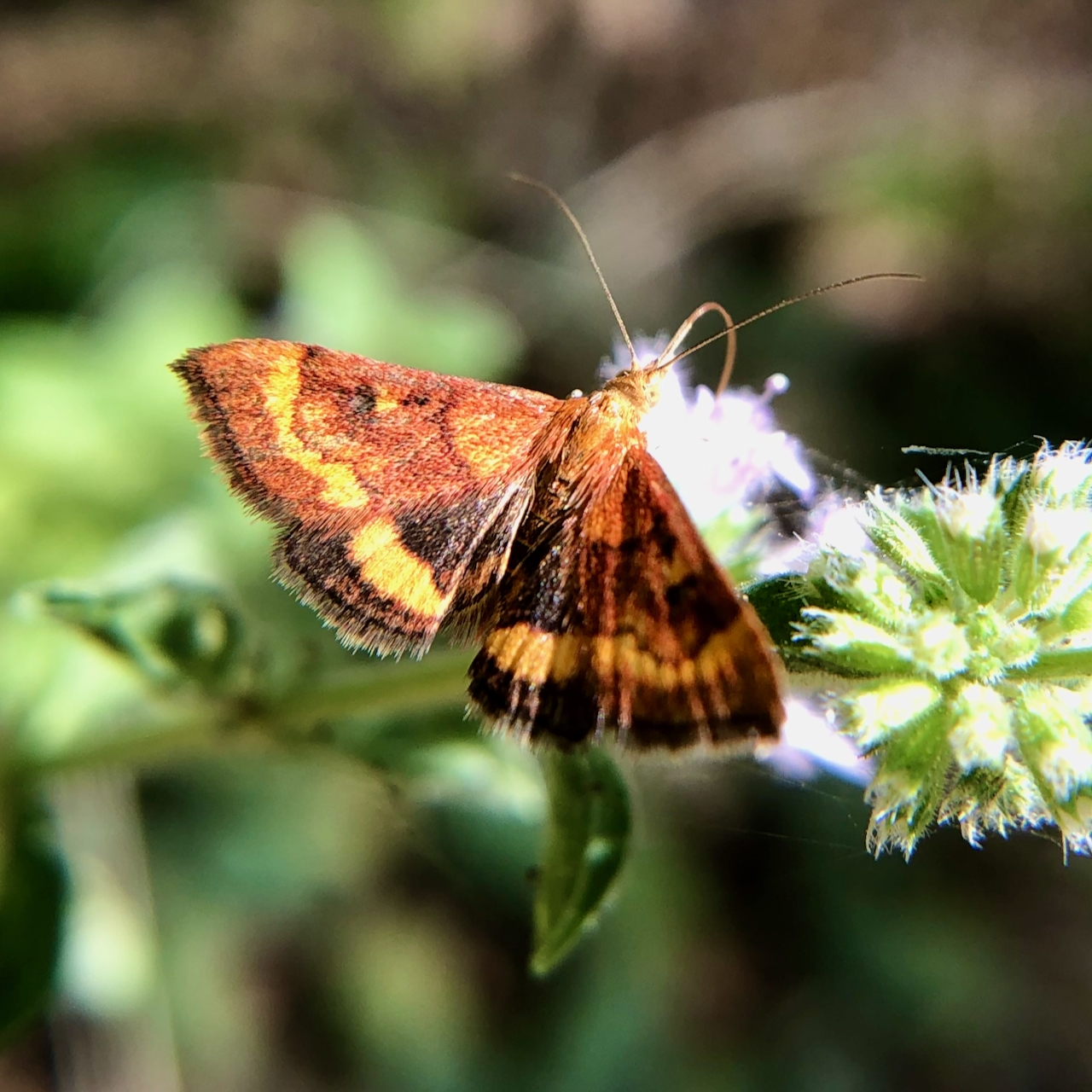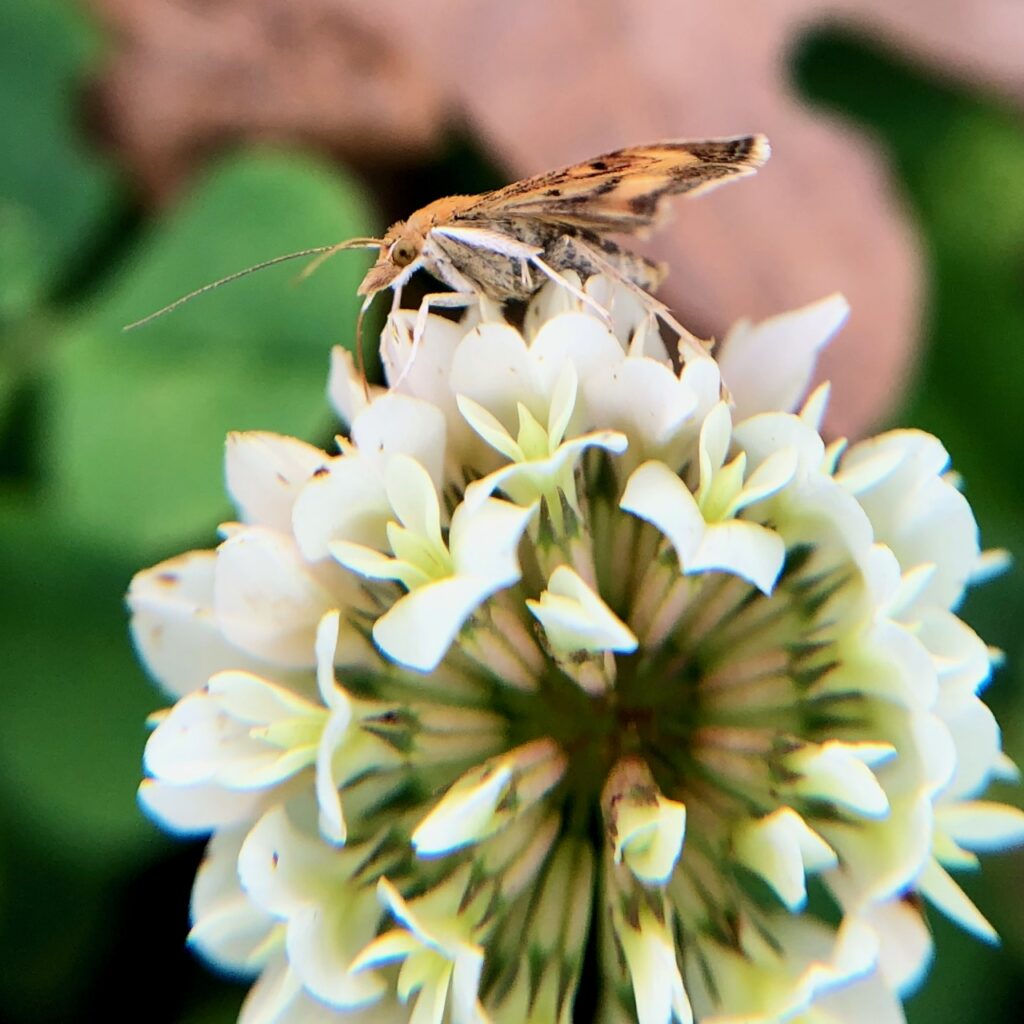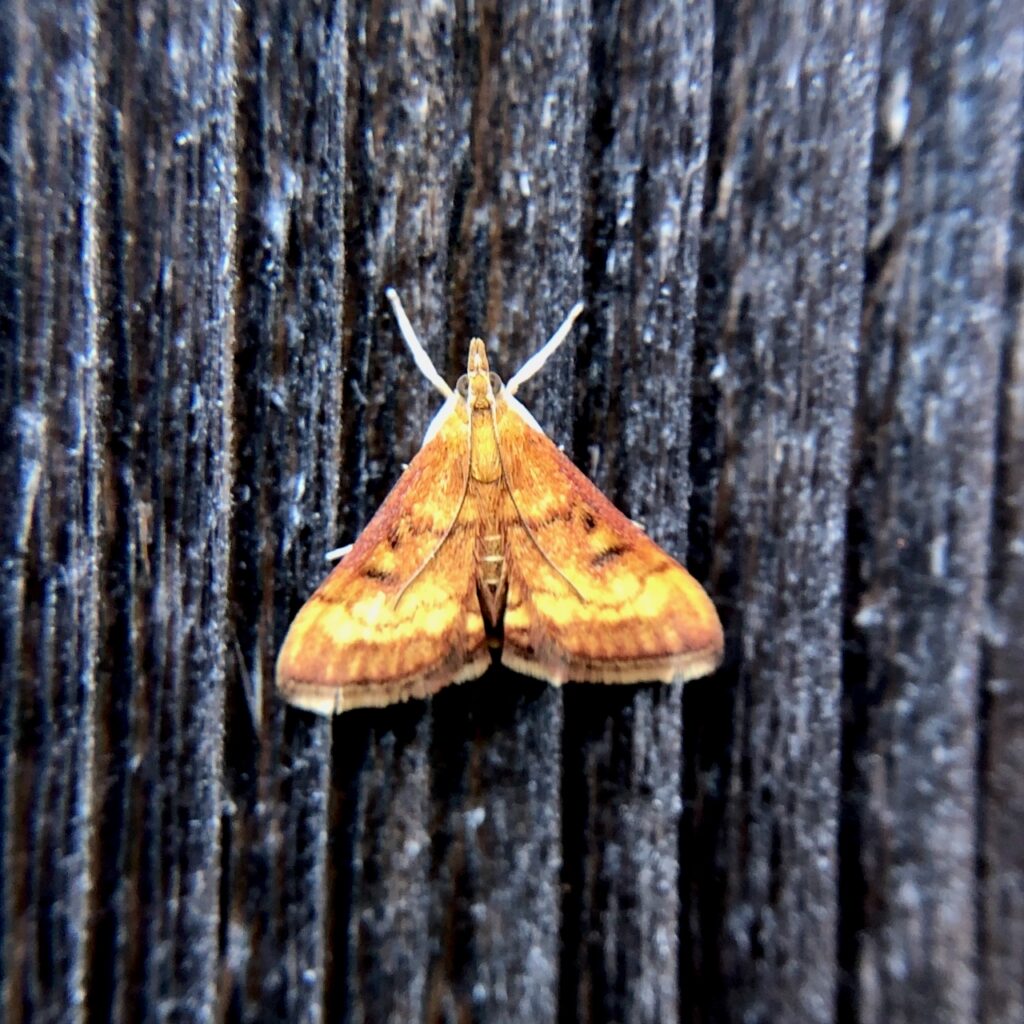While the Mint Moth isn’t green, and doesn’t smell like toothpaste, it is a refreshingly pleasing little moth that can be seen on crisp fall days.

There are at least 60 varieties of the Pyrausta genus in the U.S., and, with the exception of a Florida-based species that prefers coffee plants, the caterpillars feed on the leaves of plants in the mint family. The adults fly during the day and they sustain themselves on flower nectar, including mint.
The name Pyrausta derives from Greek, and means “singed from fire.” Pyrausta or pyrallis is also the name of a four-legged mythological insect that lived in fire.
Internet searches attribute the name to the moths’ attraction to light, but I’m not convinced that’s the connection. Pyrausta moths come in varying shades of orange, red, or pink. Could their fiery colors have inspired the name?
Most of the Mint Moths I’ve seen at Mount Pisgah are orange, with varying amounts and patterns of black. But, there are bright pink mint moths, Pyrausta inornatalis, in Eugene, according to records on iNaturalist.


Finally, if you see these little winged gems, or their larvae, on your garden mint, thyme or marjoram, please don’t hurt them. An article linked below says when Orange Mint Moth caterpillars eat mint leaves, it stimulates the plant to produce more branches, and increase leaf production. Mint farmers welcome them.
Stay curious!
See more of Karen’s work here.
Sources:
Intro to a few Pyrausta species: https://pollinators.blogspot.com/2012/05/gardening-for-honorary-butterflies-mint.html. Accessed 10/16/25.
Minnesota Seasons page describing Pyrausta orphisalis as a beneficial species: http://minnesotaseasons.com/Insects/orange_mint_moth.html. Accessed 10/16/25.
All photos by Karen Richards.